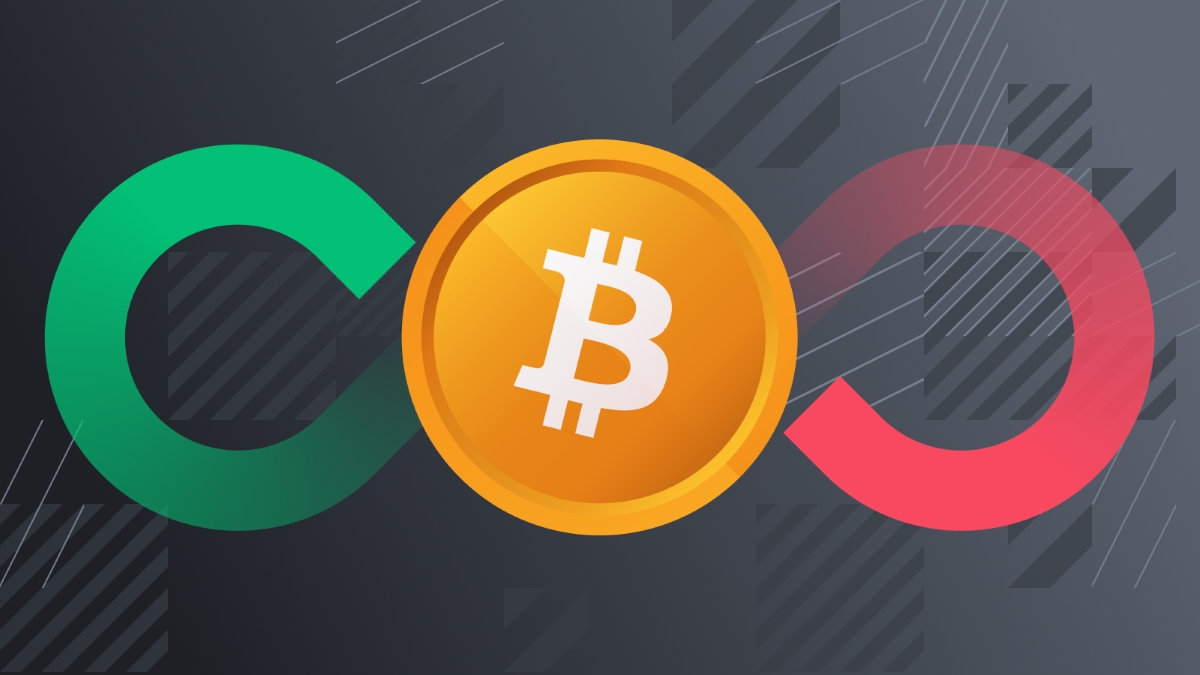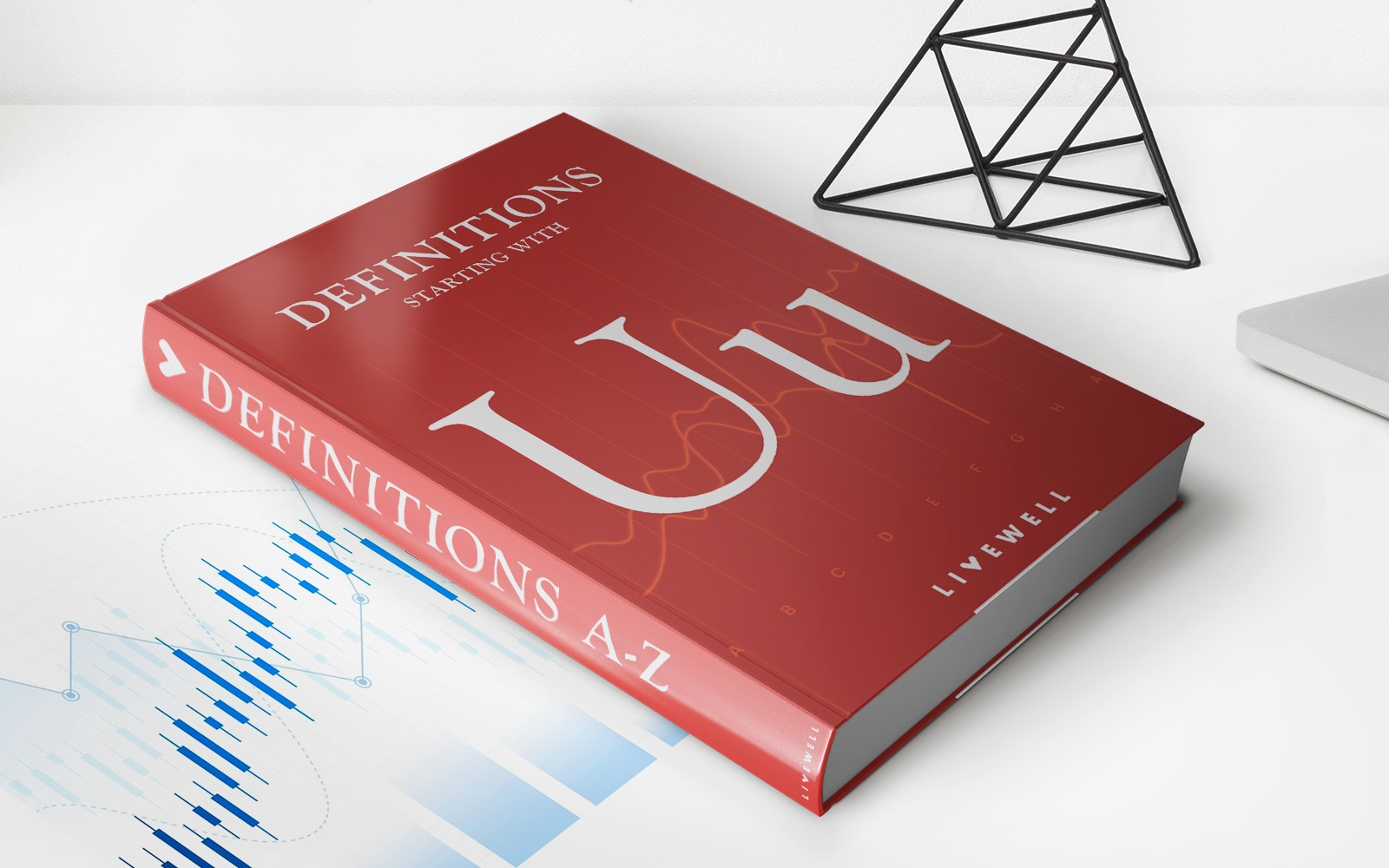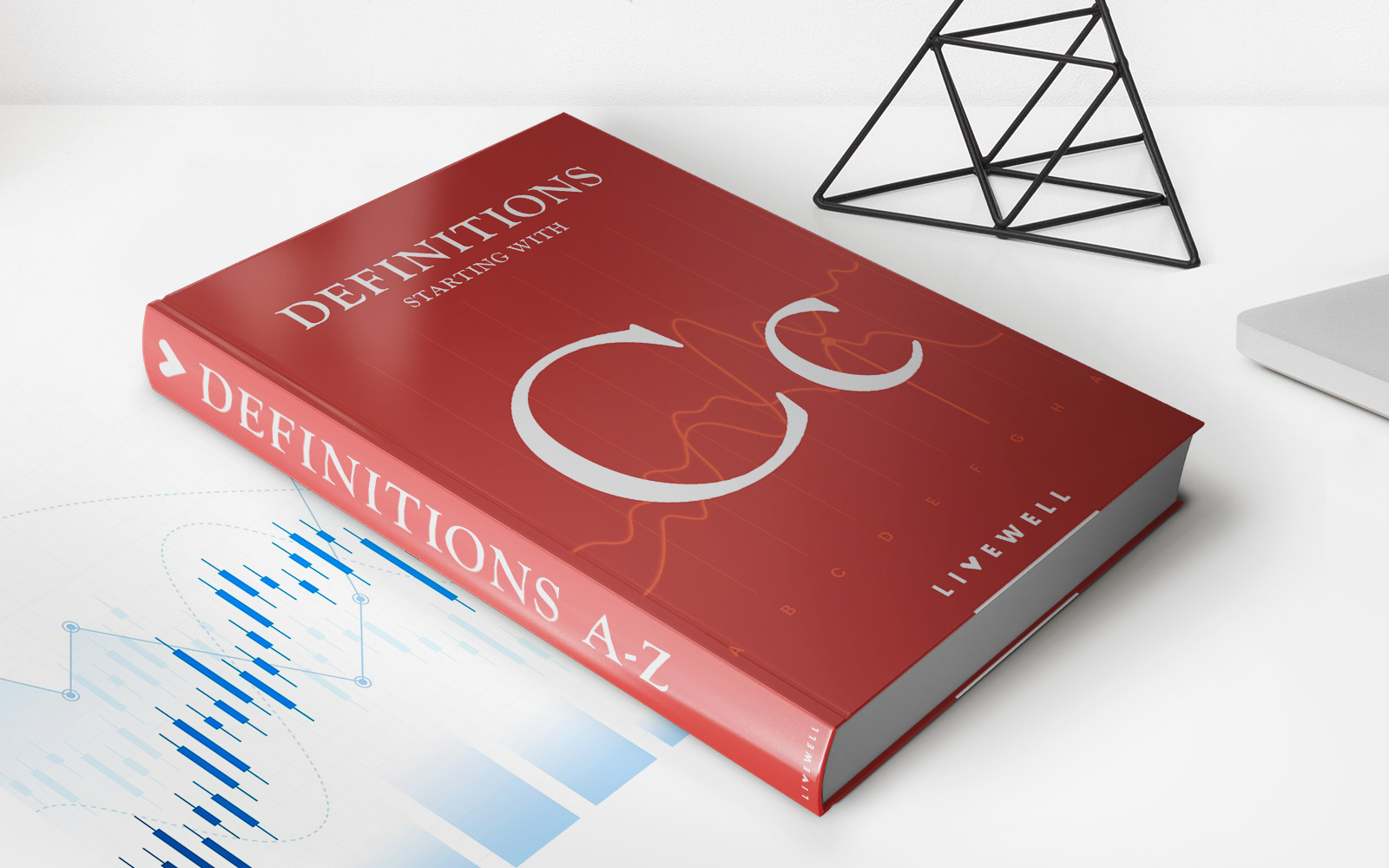Home>Finance>What Is The Settlement Price Of Futures Contracts


Finance
What Is The Settlement Price Of Futures Contracts
Published: December 23, 2023
Discover the settlement price of futures contracts and its impact on the finance industry. Explore the importance of this key aspect in trading and investment.
(Many of the links in this article redirect to a specific reviewed product. Your purchase of these products through affiliate links helps to generate commission for LiveWell, at no extra cost. Learn more)
Table of Contents
Introduction
Welcome to the fascinating world of futures contracts! If you’re new to the world of finance and trading, you may have heard the term “settlement price” thrown around in discussions about futures contracts. But what exactly is the settlement price, and why is it so important?
Futures contracts are derivative instruments that allow traders to speculate on the price movements of an underlying asset. These assets can range from commodities like oil and gold to financial instruments like stocks and currencies. When trading futures contracts, it’s crucial to have a clear understanding of how the settlement price is determined and its significance in the trading process.
In simple terms, the settlement price of a futures contract is the final price at which the contract is settled, or closed out, at the end of each trading day. It represents the average or consensus price of the underlying asset during a specific period, usually the closing minutes of the trading session.
The settlement price serves as the reference point for determining whether positions held in futures contracts have gained or lost value. Traders who hold long positions (expecting prices to rise) will profit if the settlement price is higher than their entry point, while those with short positions (expecting prices to fall) will benefit if the settlement price is lower than their entry point.
Understanding the concept of the settlement price is vital for both traders and investors involved in futures contracts. It provides important insights into the profitability of a position and helps in managing risk effectively. Moreover, it serves as the basis for cash settlement, which is the most common settlement method for most futures contracts.
Next, let’s delve deeper into the specifics of settlement prices and how they are determined in the dynamic world of futures trading.
Definition of Futures Contracts
Before diving into the intricacies of settlement prices, let’s first establish a clear understanding of what futures contracts are. A futures contract is a standardized agreement between two parties to buy or sell an asset at a predetermined price and date in the future.
These contracts are traded on exchanges and serve as a way for market participants to speculate on the price movements of various underlying assets without owning the asset itself. The underlying assets can include commodities (such as crude oil, natural gas, or agricultural products), financial instruments (such as stock indexes or currencies), or even intangible assets (such as cryptocurrencies).
The key characteristics of futures contracts include standardization, exchange-trading, and margin requirements. By being standardized, futures contracts have predetermined contract sizes, delivery dates, and settlement procedures. This allows for liquidity and ease of trading on established exchanges.
Exchange-trading is another vital aspect of futures contracts. Unlike over-the-counter (OTC) derivatives, where contracts are privately negotiated, futures contracts are traded on regulated exchanges. This ensures transparency, fair pricing, and reduces counterparty risk.
Furthermore, futures contracts require participants to post margin, which acts as a deposit to cover potential losses and ensure the stability of the market. Margin requirements vary depending on the contract and underlying asset, and are typically a fraction of the contract’s total value.
By providing a standardized and regulated marketplace for trading, futures contracts play a crucial role in hedging and speculation. Hedgers use futures contracts to mitigate price risks associated with the underlying asset, while speculators aim to profit from price movements by taking on risk.
Now that we have a solid understanding of what futures contracts are, let’s explore the concept of settlement prices and their significance in these contracts.
Settlement Price of Futures Contracts
The settlement price is a critical element of futures contracts. It is the price at which a futures contract is settled, or closed out, at the end of each trading day. The settlement price serves as the basis for determining profits, losses, and margin requirements.
In most futures markets, the settlement price is established through a process known as a settlement procedure. This procedure involves determining the average or consensus price of the underlying asset during a specific period, typically the closing minutes of the trading session.
The exact method for calculating the settlement price may vary depending on the exchange and the specific market. Some exchanges use a volume-weighted average price (VWAP) over a specified time, while others use an electronic or open outcry auction to set the price.
It’s important to note that the settlement price is not the same as the last traded price or the closing price of the underlying asset. The settlement price is a distinct value determined by the exchange and serves as the reference point for cash settlement.
Cash settlement is the most common method for settling futures contracts. Instead of physically delivering the underlying asset upon contract expiration, cash settlement involves transferring the cash value equivalent of the contract’s gain or loss based on the difference between the settlement price and the entry price.
The use of cash settlement allows futures contracts to be easily traded and settled without the need for physical delivery. It also eliminates the logistical challenges and costs associated with delivering and storing physical assets.
It’s worth mentioning that not all futures contracts use cash settlement. Some contracts, particularly those in commodities such as grains or metals, involve physical delivery of the underlying asset. In such cases, the settlement price is still crucial as it determines the final price at which the contract is settled.
The settlement price of futures contracts is not only significant for traders and investors but also for the overall market stability. It provides transparency and helps ensure fair and orderly settlements. Moreover, it serves as a benchmark for evaluating the performance of traders and the accuracy of futures pricing.
Now that we understand the concept of settlement prices, let’s explore why they hold such importance in the world of futures trading.
Importance of Settlement Price
The settlement price holds great importance in the world of futures trading for several reasons. It serves as a crucial reference point for determining profits, losses, and margin requirements, and plays a vital role in managing risk and ensuring market stability.
One of the primary reasons settlement prices are important is because they determine the profitability of futures positions. Traders who hold long positions in futures contracts, anticipating price increases, will realize a profit if the settlement price is higher than their entry price. On the other hand, traders with short positions, anticipating price decreases, will profit if the settlement price is lower than their entry price.
Understanding the profitability of positions is essential for traders to make informed decisions about entering or exiting trades. The settlement price provides a clear indication of whether a position has gained or lost value, enabling traders to assess their performance and adjust their strategies accordingly.
Moreover, settlement prices play a crucial role in managing risk. By closely monitoring settlement prices, traders can determine the potential losses or gains they may incur on their positions. This information allows them to set appropriate stop-loss levels or implement risk management strategies to protect their capital.
Additionally, settlement prices are used to calculate margin requirements. Margin is the amount of funds that traders must deposit to cover potential losses and ensure market stability. The settlement price is a key factor in determining the value of the contract and, consequently, the required margin.
Market stability is another area where the settlement price plays a vital role. It provides a transparent and accurate measure of the value of futures contracts, allowing for fair and orderly settlements. The establishment of a reliable settlement price contributes to trust and confidence in the market, fostering liquidity and attracting more participants.
Furthermore, settlement prices are often utilized as benchmarks for evaluating the accuracy of futures pricing and the performance of traders. They serve as a standard reference point for comparing the prices at which contracts are settled, providing insights into the efficiency and effectiveness of the market.
Overall, the importance of settlement prices cannot be understated in futures trading. They serve as a critical component in determining profitability, managing risk, establishing margin requirements, ensuring market stability, and evaluating market performance. Traders and investors should pay close attention to settlement prices to make informed decisions and navigate the world of futures contracts successfully.
Determination of Settlement Price
The determination of the settlement price of futures contracts is a crucial process that involves establishing a fair and accurate reference point for settling positions. The specific method used for determining the settlement price may vary depending on the exchange and the market in question.
One common method employed by many exchanges is the volume-weighted average price (VWAP). This calculation takes into account the trading volume and price of the underlying asset during a specified time period, typically the closing minutes of the trading session. By factoring in both price and volume, the VWAP provides a more comprehensive representation of the market consensus.
Another method used to determine the settlement price is an electronic or open outcry auction. In an electronic auction, market participants submit their bids and offers electronically, which are then matched to establish a final settlement price. Open outcry auctions, on the other hand, involve traders physically present on the trading floor, shouting their bids and offers to determine the settlement price through a collective negotiation process.
Regardless of the specific method used, exchanges typically have strict rules and procedures in place to ensure fairness and accuracy in determining the settlement price. These rules may include guidelines on the timing of the calculation, the inclusion/exclusion of certain trades, and methods for handling outliers or extreme price movements.
Additionally, exchanges may employ market surveillance tools and systems to monitor for any irregularities or manipulation attempts during the determination of the settlement price. This is done to maintain the integrity of the market and ensure that settlements are conducted in a transparent and orderly manner.
It is worth noting that some markets, particularly those involving physical delivery of the underlying asset, may have different methods for determining settlement prices. For example, in agricultural futures markets, settlement prices can be based on factors such as crop surveys and industry reports that provide insights into the supply and demand dynamics of the underlying commodity.
The determination of the settlement price is a crucial step in futures trading as it directly affects the profitability of positions and the overall integrity of the market. Traders and investors should closely follow the rules and procedures set by the exchange to understand how the settlement price is determined and to make informed trading decisions based on this information.
Factors Affecting Settlement Price
The settlement price of futures contracts is influenced by a variety of factors that can impact the supply and demand dynamics of the underlying asset. Traders and investors need to be aware of these factors as they can have a significant impact on the value of their positions and the overall settlement price.
1. Market Forces: The most significant factor affecting the settlement price is the interplay of supply and demand in the market. Economic factors, geopolitical events, weather conditions, and changes in consumer preferences can all influence the perceived value and expected future price of the underlying asset.
2. Interest Rates: Changes in interest rates can affect the cost of financing and storage of commodities, which, in turn, can impact the settlement price. Futures contracts tied to interest rate-sensitive assets, such as bonds or currencies, are particularly sensitive to changes in interest rates.
3. Seasonality: Some markets exhibit seasonal patterns that affect the demand for certain commodities. For example, agricultural commodities like wheat and corn are affected by planting and harvesting seasons, while energy commodities like natural gas may see increased demand during winter months.
4. Market Volatility: Higher levels of market volatility can impact the settlement price as they reflect increased uncertainty and risk in the market. Traders and investors may demand higher compensation for taking on this additional risk, which can impact the settlement price of futures contracts.
5. Stock Market Movements: In certain cases, the stock market can have an indirect influence on the settlement price of futures contracts. Impacts on investor sentiment and overall market confidence can spill over into other asset classes and impact the settlement price of related futures contracts.
6. Government Policies and Regulations: Changes in government policies and regulations can have a significant impact on the settlement price of futures contracts. For example, changes in trade policies or environmental regulations can affect the supply and demand dynamics of certain commodities.
7. External Events: Unexpected events such as natural disasters, political unrest, or pandemics can disrupt supply chains and impact the settlement price of futures contracts. These events introduce additional uncertainty and can cause sudden shifts in market sentiment.
It’s important to note that the impact of these factors on the settlement price can vary depending on the specific market and underlying asset. Traders and investors should stay informed about relevant news and market developments to assess how these factors may influence the settlement price of their futures contracts.
Role of Settlement Price in Trading Futures Contracts
The settlement price plays a crucial role in the trading of futures contracts, serving as a reference point for various aspects of the trading process. Let’s explore the key roles that the settlement price plays in the world of futures trading.
1. Profit Calculation: The settlement price determines the profitability of futures positions. It is the basis for calculating gains or losses on a contract. Traders who hold long positions will profit if the settlement price is higher than their entry price, while those with short positions will benefit if the settlement price is lower. The settlement price provides a clear reference for assessing the success of a trade.
2. Margin Requirements: The settlement price influences the margin requirements for futures contracts. Margin is the amount of funds that traders must deposit as collateral to cover potential losses. As the settlement price changes, the value of the contract fluctuates, impacting the required margin. Traders must monitor the settlement price to ensure they meet margin obligations and avoid margin calls.
3. Risk Management: The settlement price is vital for effective risk management. Traders use stop-loss orders and profit targets based on the expected settlement price. By closely monitoring the settlement price, traders can make informed decisions to manage risk, adjust positions, or exit trades. Understanding the settlement price helps traders set realistic expectations for potential gains or losses.
4. Contract Settlement: The settlement price is the basis for settling futures contracts. At contract expiration, the settlement price determines the cash settlement for the contract. Traders do not physically deliver or receive the underlying asset but instead receive or pay the cash equivalent based on the difference between the settlement price and the entry price.
5. Price Discovery: The settlement price provides valuable price discovery information for the underlying asset. It represents the market consensus of the asset’s value at the end of the trading day. This information is useful for participants in other related markets or those seeking to track the performance of the underlying asset.
6. Market Transparency: The establishment of a reliable settlement price promotes market transparency and integrity. It ensures a fair and equitable settlement process for all participants. When settlements are based on a transparent and accurate settlement price, it enhances confidence and trust in the market.
7. Benchmarking and Evaluation: The settlement price serves as a benchmark for evaluating the performance of traders, hedge funds, and other market participants. It allows for the comparison of trading results, risk management strategies, and overall market efficiency. Analysts and market participants use settlement prices to assess the accuracy of futures pricing and identify any anomalies in the market.
By fulfilling these roles, the settlement price provides critical information and a framework for traders and investors to manage risk, calculate profits or losses, and make well-informed trading decisions in the futures market.
Conclusion
In conclusion, the settlement price is a fundamental aspect of futures contracts that holds immense importance in the world of trading. It serves as the reference point for determining profits, losses, and margin requirements. Understanding the settlement price is vital for traders and investors as it enables them to assess the profitability of positions, manage risk effectively, and make informed trading decisions.
The settlement price is determined through various methods such as volume-weighted average price (VWAP) or electronic/open outcry auctions. These methods ensure fairness, accuracy, and transparency in establishing the settlement price.
Several factors influence the settlement price, such as market forces, interest rates, seasonality, market volatility, government policies, and external events. Traders must stay informed about these factors to understand their impact on the settlement price and adjust their strategies accordingly.
The settlement price plays a crucial role in calculating profits, determining margin requirements, managing risk, and settling futures contracts. It provides valuable insights into market sentiment, helps in price discovery, and facilitates benchmarking and evaluation of market participants’ performance.
By understanding the significance of the settlement price and how it is determined, traders and investors can navigate the dynamics of futures trading more effectively. Monitoring the settlement price and its associated factors allows traders to make informed decisions, manage risk appropriately, and ultimately enhance their chances of success in the exciting world of futures contracts.














